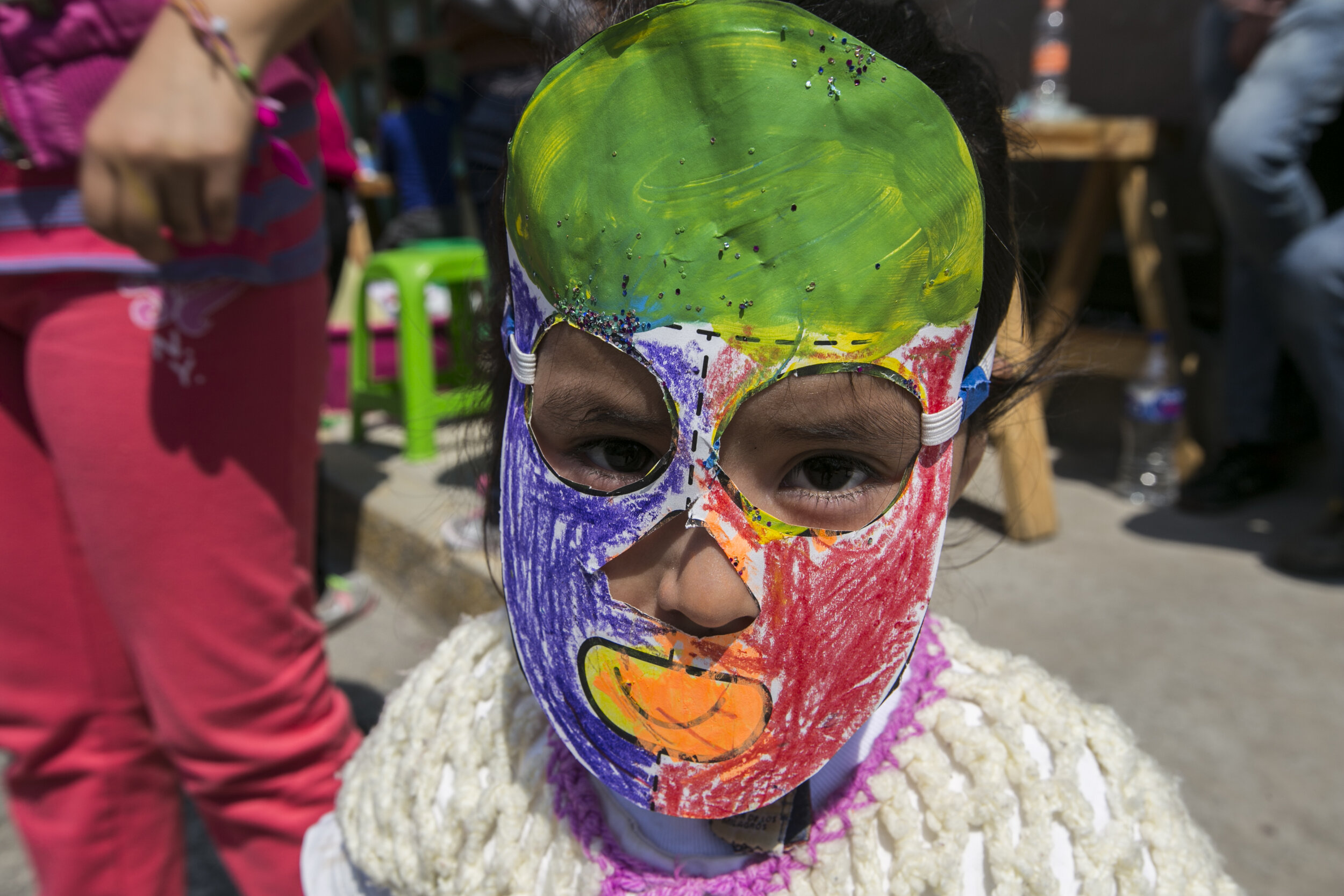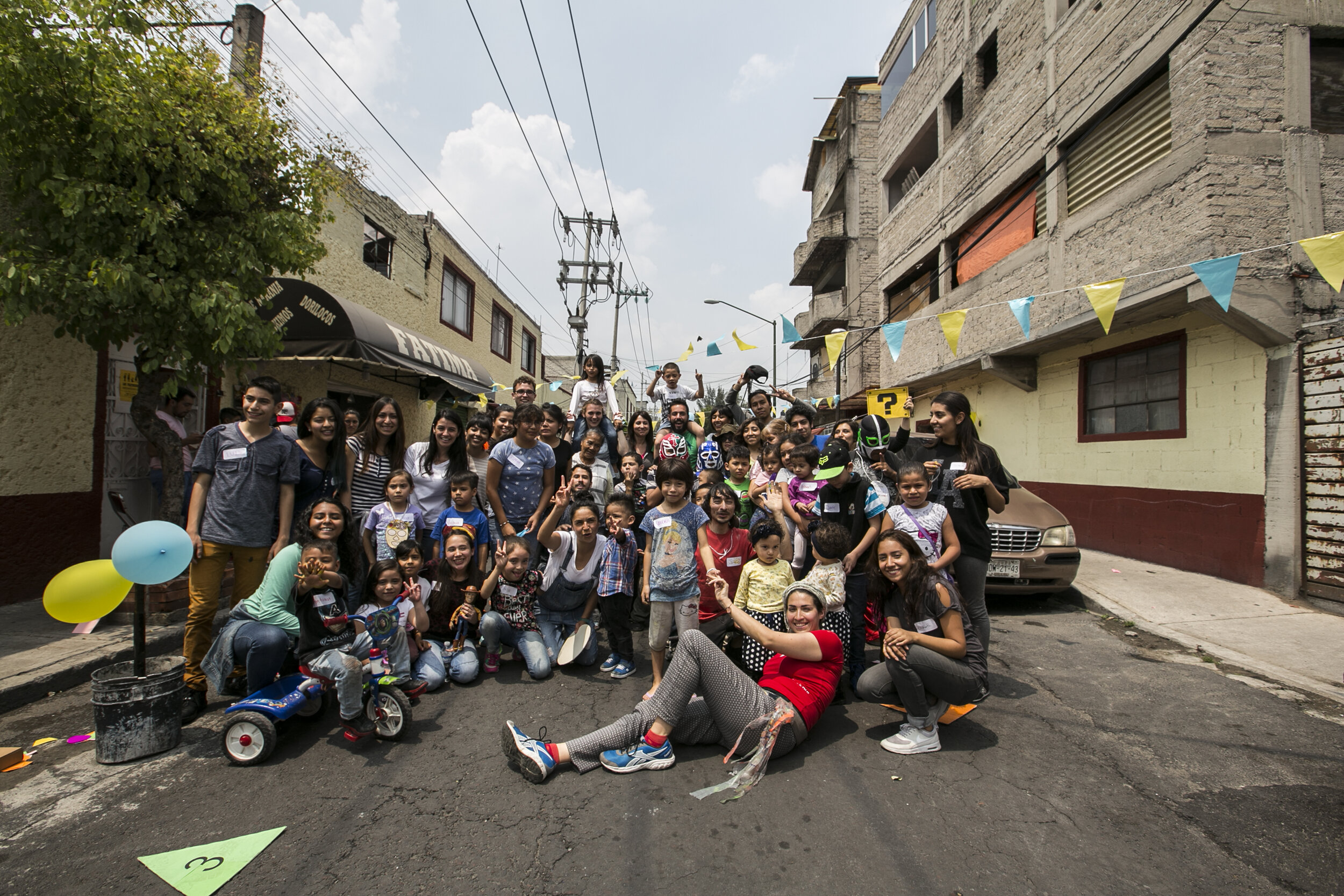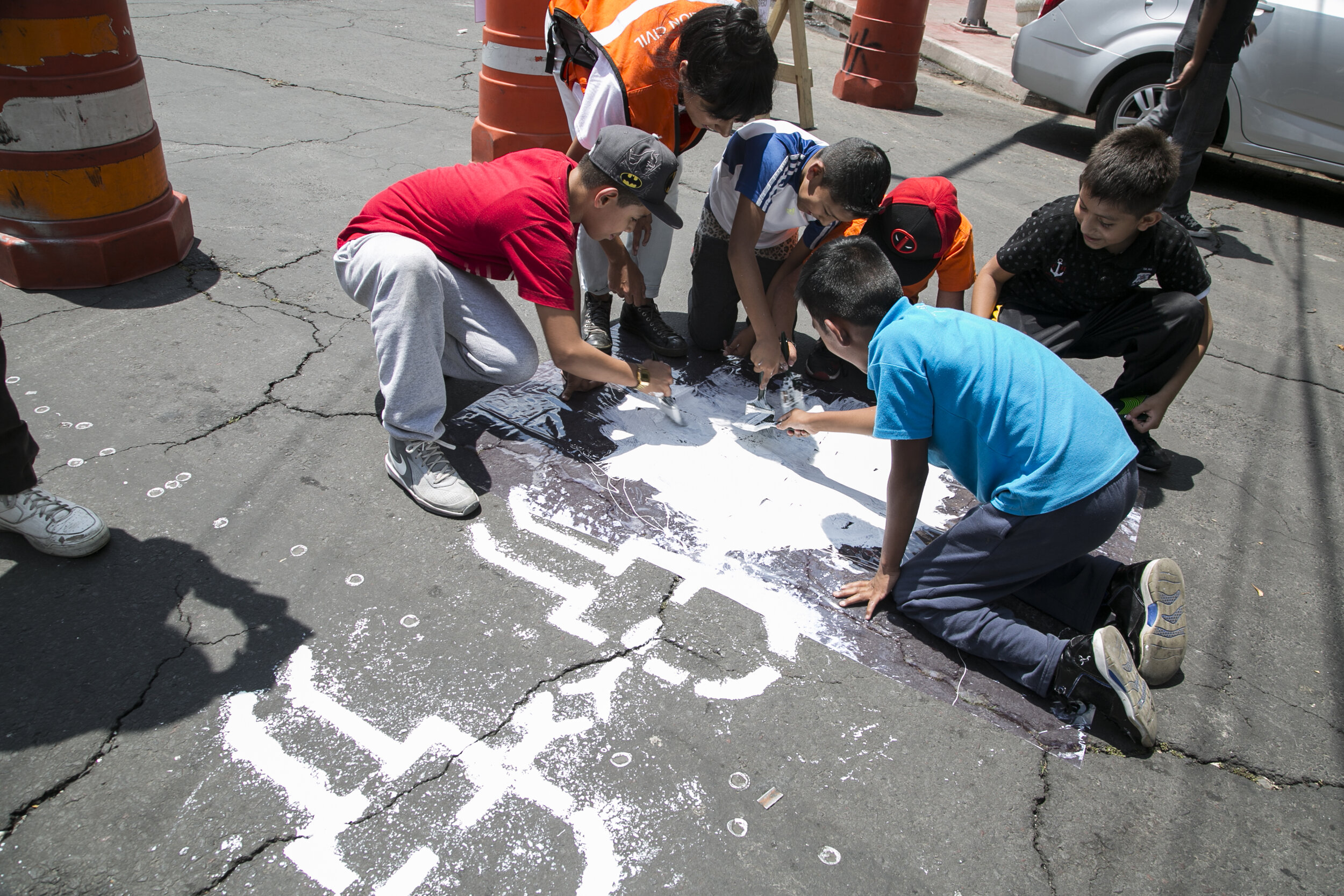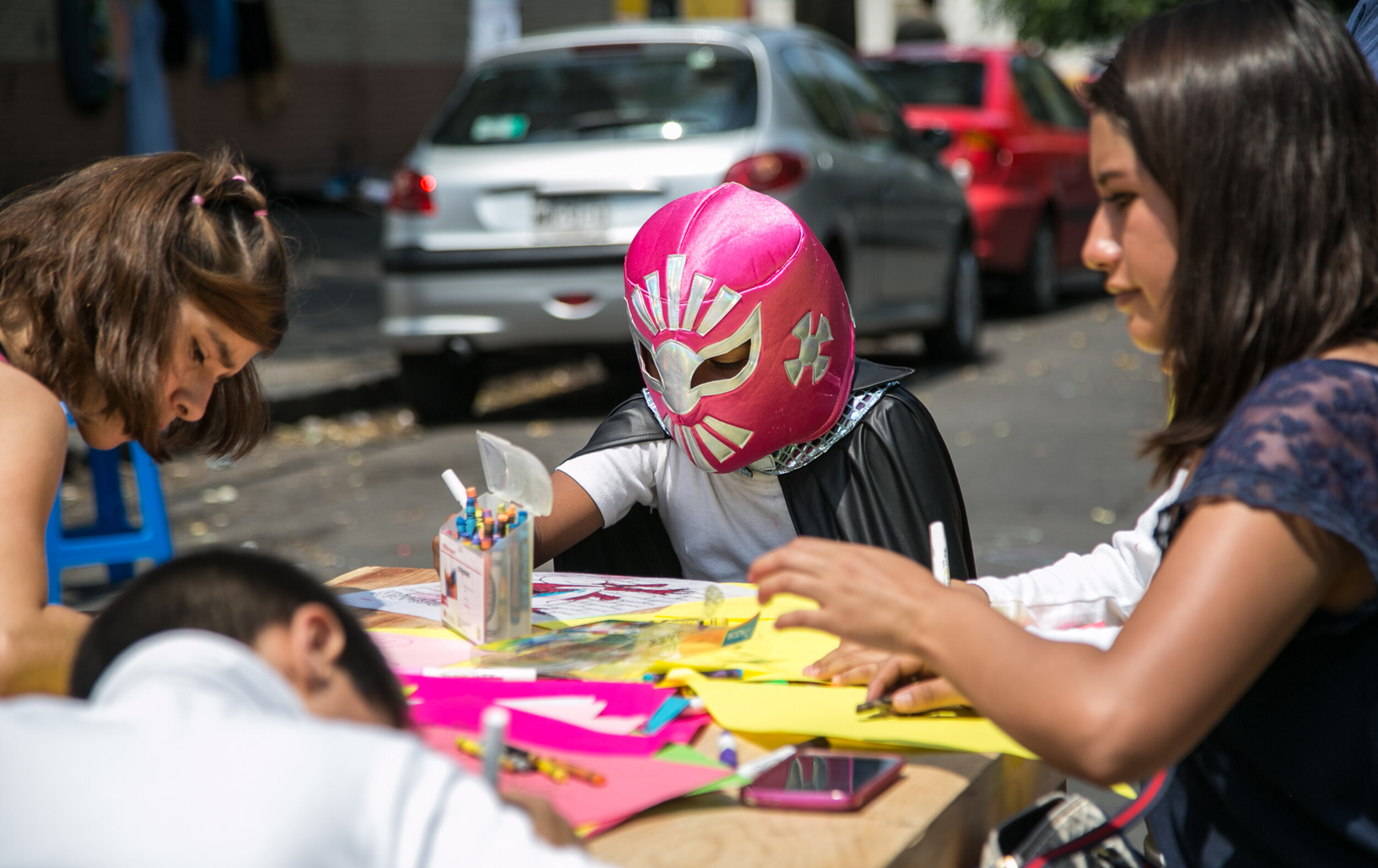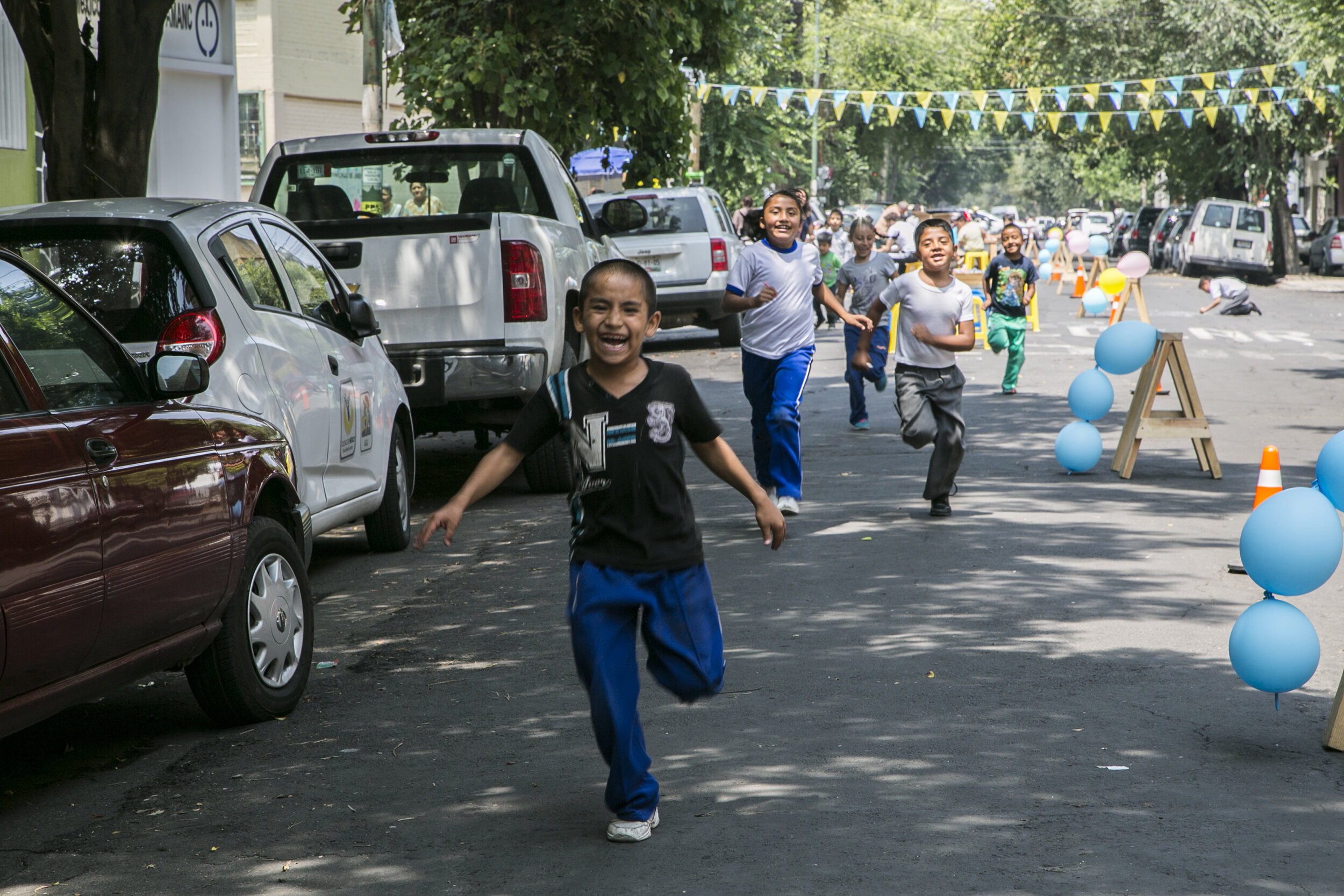The Peatoniños of Mexico City:
Liberating the streets for kids and for play
Project Collaborators: Laboratorio Para La Ciudad , Brenda Vértiz, Jorge Cáñez, Miguel Ángel Morales
Participants: Heidi Alexander, Maricela Becerra, Kenton Card, Ryan Hernandez, Devin Koba, Paola Mendez, Maria Teresa Monroe, Jeannette Mundy, Gus Wendel
Peatoniños is a wordplay in Spanish that means “child pedestrians” or “children that walk”. It is a project created and lead by the Laboratorio para la Ciudad (Lab for the City) –Mexico City’s creative and experimental office directly reporting to the city Mayor, and in collaboration with the UCLA Urban Humanities Initiative. The project is part of the Lab’s Pedestrian and Playful city strategies whose objective is to understand how alternative or non motor-based modes of travel and play can reconfigure urban imaginaries and provoke citizens to take an active role in the city-making process. Using “Liberating the streets for children and play” as its motto, Peatoniños consists of planning, designing, implementing and evaluating playstreets, in areas of the city with high levels of marginalization, large child populations, and few open play spaces.
Peatoniño’s is a response to the lack of, or the uneven distribution of, playful spaces in Mexico City. This project’s playstreets seek to expand and make more accessible play and playful spaces in CDMX through the use of existing public space, specifically its streets. Peatoniños aims to produce physical manifestations of alternative street use, demonstrating the city’s social fabric and community interactions beyond the spatial paradigm of the car-oriented model. The three guiding principles of a Peatoniño’s playstreet are: 1) A community-centered design approach, 2) a spatial and urban analysis carried out through a GIS (Geographic Information System) mapping tool, and 3) a pedagogical approach that promotes a child’s right to the city, right to play and knowledge of issues regarding road safety. Ultimately, it seeks to liberate and reappropriate the streets of the city through play, especially in neighborhoods where public space is scarce.



